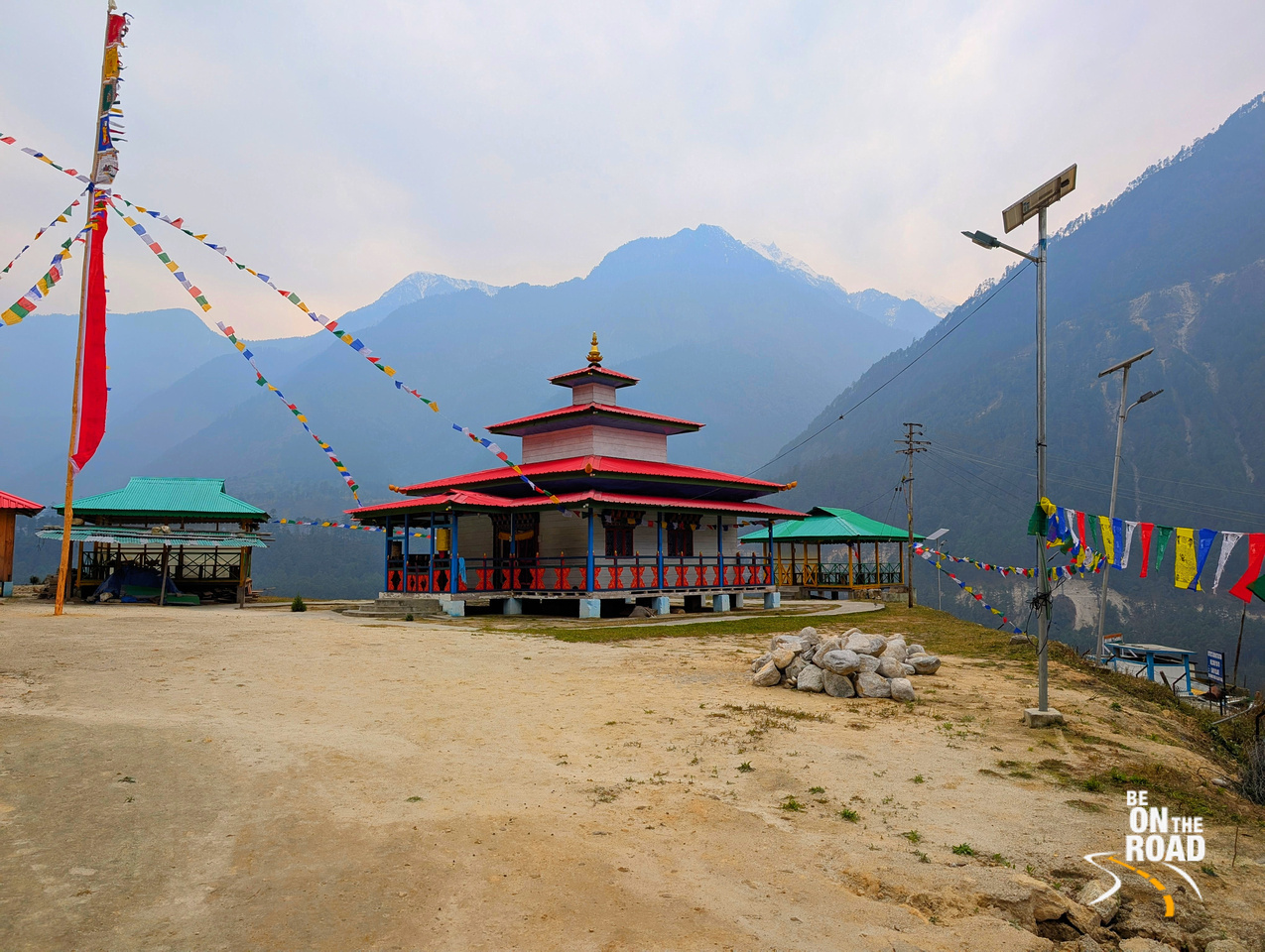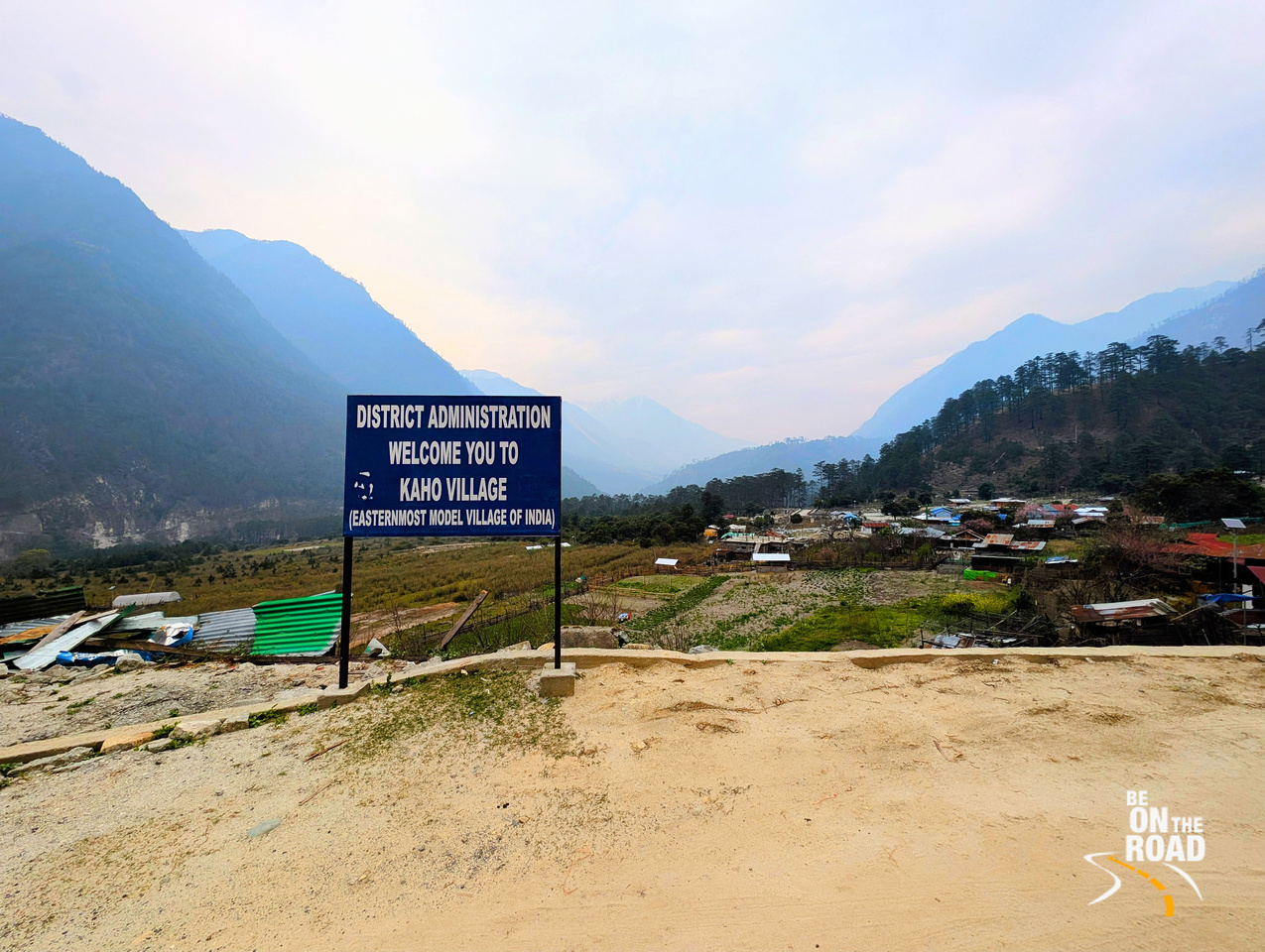Arunachal Pradesh’s Kaho: The First Village of India

This Himalayan village is called the ‘Easternmost model village of India’. Some people also refer to it as the ‘First Sunrise Point of India’. But, most commonly it is called the ‘First village of India’. It was declared as the first village of India by the current Indian government in November 2022. I am talking about Kaho, a small village located on the India – China border in the Anjaw district of Arunachal Pradesh.

If you draw a straight line down from Kaho on the global map, it will pass through Eastern Myanmar and Western Sumatra island in Indonesia. It is located far east of the Andaman and Nicobar Islands. And if you draw the same straight line, but traveling northwards, you will cut through central China, Western Mongolia and Central Russia. That is how far east the village of Kaho is located. It also gives you an idea about India’s breadth from West to East.

This village of Kaho is home to about 78 residents from 15 families belonging to the Meyor tribe who follow Buddhism. The costumes and culture of the people of Kaho is similar to that of the Monpas of Tawang, Membas of Mechuka and Tibetans. The Meyors are very hospitable and are extremely patriotic. An example of their patriotism is the 1962 Indo-China war when they helped the Indian army during the Chinese aggression. The village of Kaho is surrounded by snow capped mountains and is located by the banks of the swift Lohit river. It’s valley is known for cold winds and heavy rainfall. Agriculture, horticulture and animal husbandry is the main occupation of the villagers here, though some people manage basic shops to cater to the needs of the soldiers and officers of the Indian army and the minimal tourists who visit here.

The village of Kaho is so small that you can finish walking its length and breadth in less than an hour. At one end is the newly renovated Buddhist monastery, the homestay, the home of the village head, a few shops, a restaurant and at the other end of the village is located a primary school and the checkpost that leads to the India- China border. In between, you can see farmland where they grow greens, tubers, peach, pears, kiwi fruit, oranges, cabbage, cauliflower and more. And surrounding all this land are mountain streams, pine forests and mighty snow capped mountains. For higher school, one needs to go to Kibithu. And for a health center, one needs to head to Walong. Thankfully, due a newly constructed hydroelectric project, they get fairly regular electricity supply.

On a clear day, one can easily see the villages of China that are located on the other side of the river. In fact, these villages are located so close to each other that your phone will catch the time zone from China (which is 2 hours ahead) and sometimes even catch the network of the Chinese telecom operators. There is a telescope on top of the Kaho view point through which one could take a closer look at the Chinese villages, but this has been stopped for the time being.

There is hardly much to see or do in Kaho, but it is the journey from Tezu to Kaho that makes up for the real experience. The winding mountain roads by the Lohit river with dense forests, umpteen waterfalls, traditional wooden suspension bridges, bailey bridges, picturesque landscapes, snow capped mountains, remote tribal villages, army camps and adventurous road sections make up for the overall thrilling experience.

If you really like to explore and experience India, Kaho should definitely be on your travel bucket-list. This sleepy hamlet on the eastern most end of India and bordering China can offer you many unique experiences and sights. If you plan in advance, you can even trek these mountains and raft in the fast flowing Lohit river.
Things to keep in mind:

1) You need an inner line permit to explore Arunachal Pradesh and all the districts that you are traveling including the Anjaw district must be clearly mentioned in your permit.
2) Mobile connectivity, including data connectivity can be patchy all through this region. Though when available, you can pay using UPI.
3) ATMs are few and far between. Do keep necessary cash in hand.
4) There are only a few petrol bunks from Tezu to Kaho. Do keep a note of all the locations and try to keep your tank full at all times.
5) Either travel by a 4WD vehicle or travel with a person who knows how to handle the slushy and slippery mountain terrain well.
6) Keep a first-aid kit and your medical supplies stocked at all times. The only options for a emergency are doctors in army camps and/or a health center in Walong.
7) Snacks and drinks of your choice might not be available at Kaho. Do buy them in advance at either Tezu or Hayuliang.
Best time to visit:
The spring months of March through May are the best months to visit Kaho. The weather is pleasant, the roads are in decent condition and the entire region is full of wildflowers. The post monsoon months from October to December are when the terrain is lush. Expect the temperatures to be a bit on the lower side and the roads to be in poorer condition post landslides and other monsoon disasters. January and February months will be bitter cold, but if you are prepared for the cold, you can enjoy a quiet holiday. The monsoon months from June through September are best avoided as this region receives copious rainfall and it is prone to landslides and floods.
How to reach there:
The nearest airport is Tezu airport, about 225 kms away, but the nearest airport with the best connectivity is Dibrugarh airport, about 378 kms away.
The nearest railway station with good connectivity is Dibrugarh railway station, about 378 kms away.
If you are driving from Tezu, the route would be Tezu –> Tidding –> Hayuliang –> Hawai –> Walong –> Kaho, totalling 225 kms.
Where to stay:

Chochi homestay run by the head of the village is a decent place to stay in the heart of the village. The rooms are simple, cosy and warm. The rooms have access to hot water facility, though the geysers work only when electricity is available. Fresh and hot home cooked meals are available at this homestay.
There is one more homestay run by the head of the village. This property is basic and the bathrooms are shared.
Where to eat:
You can eat all your meals at the homestay where you are staying and for lunch, you can either eat at the only restaurant in the village or at any of other restaurants in the regions that you are visiting.
Other nearby tourist attractions:
1) Hot water spring at Tilam village
2) Dong Valley: The place of the first sunrise in India
3) Kibithu: Another sleepy hamlet by the Indo-China border













































